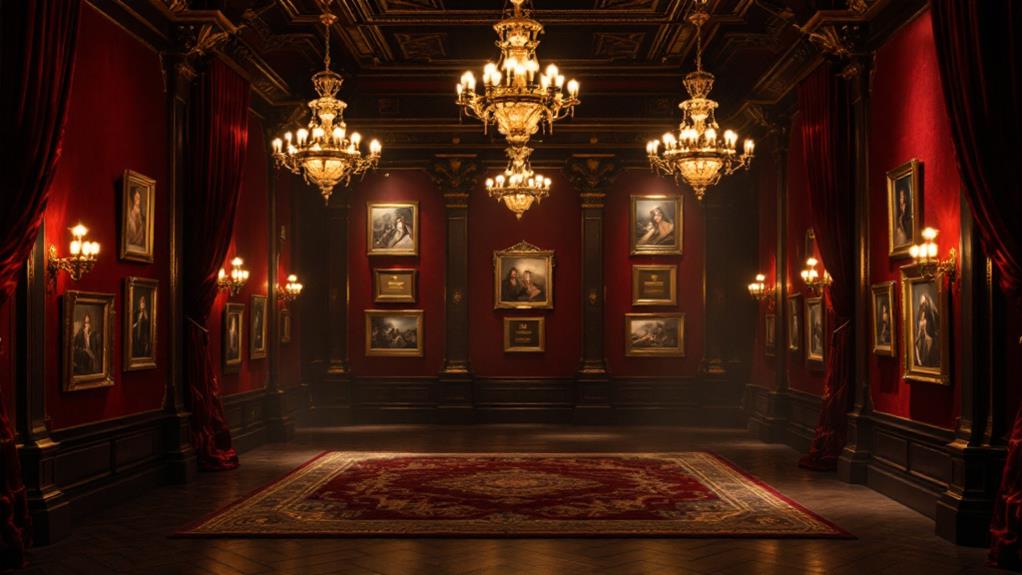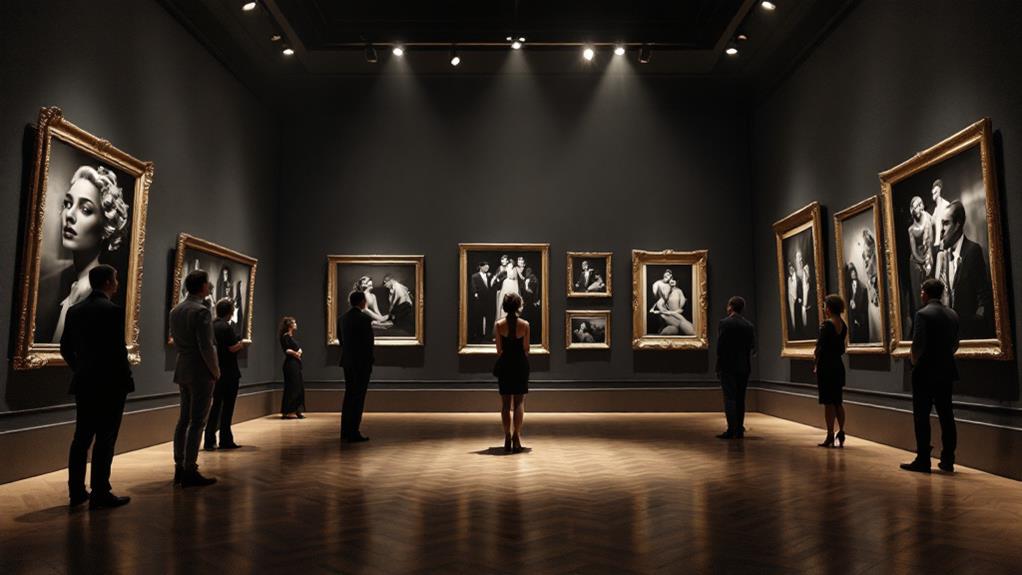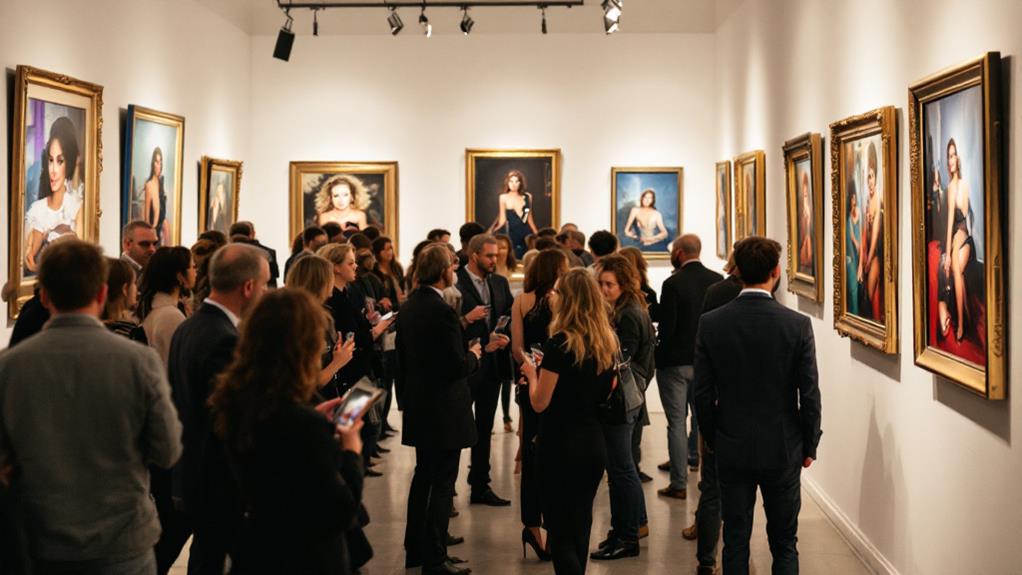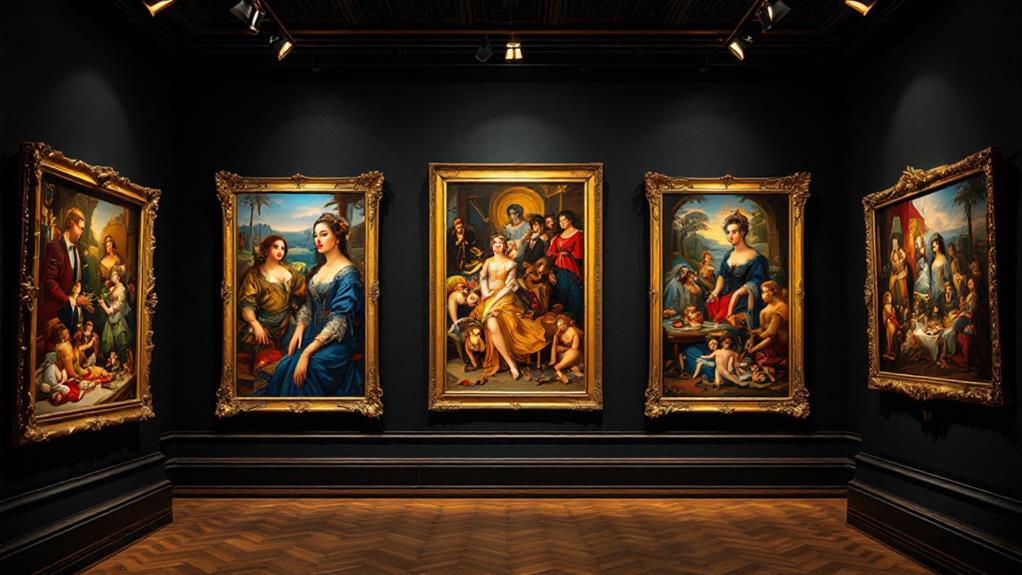The Most Expensive Photographs Ever Sold and the Stories Behind Them

You're probably curious about the stunning prices fetched by photographs like Man Ray's "Le Violon d'Ingres," which sold for $12.4 million, making it the most expensive. Peter Lik's "Phantom" reportedly sold for $6.5 million, though its sale is shrouded in controversy. Andreas Gursky's minimalist "Rhein II" once led the market at $4.3 million. What drives these prices? Often, it's the rarity, artist reputation, and historical context. Even digital trends and NFTs influence value now. Each photograph tells a unique story, raising questions about art's worth and impact. There's plenty more to uncover about these fascinating icons.
Record-Breaking Sales
In the domain of art, where boundaries blur between reality and imagination, photographs have reached unprecedented heights in value. Among the most expensive ever sold, Peter Lik's photograph "Phantom" holds the record, fetching a staggering $6.5 million in December 2014. This sale marked a significant moment in the art world, setting a record for the highest price ever paid for a photograph. Previously, Andreas Gursky's "Rhein II" held the record at $4,338,500 in November 2011, showcasing the growing appreciation for contemporary photography.
You might be intrigued to know that Cindy Sherman's "Untitled #96," sold for $3,890,500 in May 2011, stands as one of the highest-priced works by a female artist in this field. Meanwhile, Richard Prince's "Spiritual America," sold for $3,973,000 in May 2014, underscores a strong market demand for provocative and controversial art pieces. Another notable mention is Andreas Gursky's "99 Cent II, Diptych," which sold for $3,346,456 in February 2007, further demonstrating the impressive valuation of modern photography. Each of these record-breaking sales reflects the evolving landscape of art, where photographs command respect and extraordinary prices at auctions.
Factors Influencing Value
When evaluating the value of a photograph, several key factors come into play. Rarity and uniqueness are essential, as they greatly improve market value. Limited edition prints and rare images like Peter Lik's "Phantom," which fetched $6.5 million, exemplify this. Provenance and historical significance also weigh heavily, with works such as Andreas Gursky's "Rhein II" selling for $4.3 million due to its role in contemporary art history. These elements signal a photograph's importance and its passage through time.
Artist reputation can't be overlooked either. Cindy Sherman's groundbreaking exploration of identity in "Untitled #96," sold for $3.89 million, shows how a well-regarded artist can raise a work's value. Print quality and craftsmanship play a vital role too. Richard Prince's "Spiritual America," which sold for $3.97 million, underscores how detailed print quality can impact valuation.
Market trends and collector demand steer the market, with rising interest in digital photography and NFTs, like Justin Aversano's "Twin Flames #49," illustrating current preferences. Understanding these factors helps you comprehend why some photographs command such extraordinary prices and their significance in the art world.
Iconic Photographers

Cameras have captured the world through the eyes of iconic photographers who forever changed the landscape of visual art. Cindy Sherman, known for her groundbreaking conceptual photography, investigates themes of identity and female stereotypes. Her iconic work, "Untitled #96," fetched $3.89 million at auction in 2011, highlighting her impact on the art world. Andreas Gursky's "Rhein II," a minimalist masterpiece, sold for $4.3 million the same year, making it one of the most expensive photographs ever sold. His large-scale, digitally manipulated images challenge the boundaries of photography.
Man Ray, a modernist pioneer, bridged photography and surrealism. His "Le Violon d'Ingres" achieved $12.4 million at a 2022 auction, emphasizing his enduring influence. Edward Steichen's "The Flatiron," capturing the emotional depth of early architectural photography, sold for $11.8 million in 2022, demonstrating the timeless significance of his work.
These photographers' iconic works have not only commanded high prices but also redefined art and photography. Through auctions, their expensive photographs continue to spark discussions about identity, authorship, and the evolving nature of visual storytelling. Their legacies endure, shaping the art world for future generations.
Historical Context
Photography's expedition as a recognized art form traces back to the 19th century, when it began gaining traction among artists and collectors alike. This transformation was influenced by several key factors, which continue to shape how photographs are perceived and valued today:
- Historical Significance: Photographs that capture crucial cultural moments or depict iconic figures have always held a certain allure. Their ability to freeze time and immortalize history adds to their desirability, greatly impacting auction prices.
- Influential Photographers: Artists like Cindy Sherman and Andreas Gursky have raised photography to the domain of collectible art. Their works, often auctioned at prestigious houses like Christie's, highlight the artistic depth and conceptual innovation that photography can achieve.
- Technological Intersection: The evolution of digital manipulation and the emergence of NFTs have reshaped photography's landscape. These technological advancements offer new creative possibilities, impacting both the art form itself and its market values.
As a result, the auction prices for photographs have soared since the 2000s, with some fetching millions of dollars. This reflects the art form's growing prestige and its capacity to capture the essence of cultural moments, further solidifying its status in the domain of collectible art.
Market Trends

In the current art world, the market for fine art photography is booming, reflected in record-breaking auction prices and growing demand. You're seeing photographs like Man Ray's "Le Violon d'Ingres" sell for $12.4 million, marking it as one of the most expensive photographs ever sold. Not far behind, Peter Lik's "Phantom" fetched $6.5 million in 2014, signaling a surge in interest for contemporary photography. Auction houses like Christie's and Sotheby's are essential in this trend, facilitating sales that create competitive environments. These platforms help drive prices higher and attract collectors.
Digital platforms and online auctions have made it easier for you to access and appreciate unique images, broadening the market for fine art photography. As more collectors view photography as an alternative asset class, artists like Cindy Sherman continue to command millions. With growing interest, you're witnessing a shift where contemporary photography is gaining prestige similar to traditional art forms. These market trends indicate a robust future for photography, promising continued growth and new records. As the demand increases, you'll likely see even more striking sales that redefine the boundaries of this dynamic art form.
Controversies in Sales
The art market's fascination with high-priced photography sales isn't without its controversies. Each sale stirs debates on authenticity, artistic intent, and the role of money in art. Take Richard Prince's Spiritual America for instance. It sold for a staggering $3,973,000, yet it ignited fierce discussions about authorship and the ethics of reappropriating existing images. This piece questions the boundaries of originality in the commodification of art.
Consider Peter Lik's Phantom, which allegedly sold for $6.5 million. Some critics argue the sale's authenticity, suggesting it might be a marketing ploy. Such controversies highlight the tension between genuine sales and exaggerated claims, challenging the way expensive photographs are presented to the public.
Finally, Cindy Sherman's Untitled #96 raised eyebrows when it fetched $3,890,500 at auction. This sale underscores the ongoing debate over the commodification of art, particularly how market forces can overshadow artistic intent.
- Man Ray's Le Violon d'Ingres: Sold for $12.4 million, reflecting photography's historical significance.
- Billy the Kid's ferrotype: Sold for $2.3 million, sparking debates on authenticity.
- Cindy Sherman's Untitled #96: Highlighted commodification concerns.




